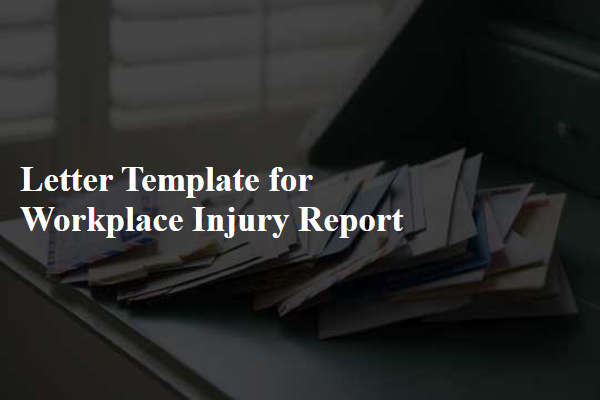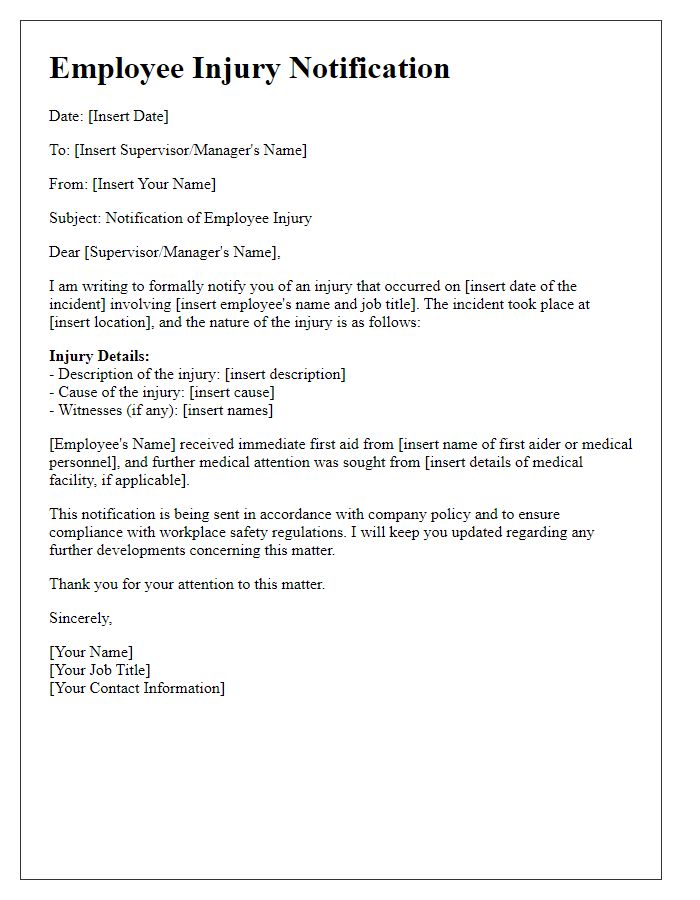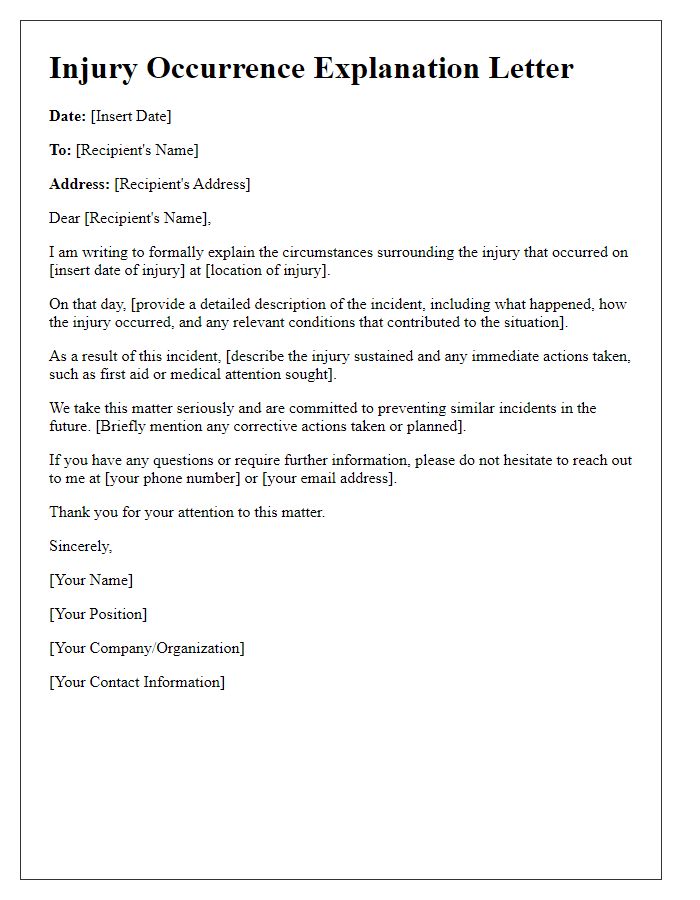When it comes to workplace safety, understanding how to report an injury is crucial for both employees and employers. In this article, we'll walk you through a comprehensive template for documenting a workplace injury, ensuring that you provide all necessary details for proper assessment and follow-up. Whether you've experienced an incident firsthand or are looking to equip your team with the right tools, we've got you covered. Ready to dive in and learn more?

Employee Information
The workplace injury report should include crucial employee information such as full name, employee identification number, and department name. Additional details like the job title provide context on the employee's role within the organization, while the date of birth ensures accurate identification and compliance with privacy regulations. Recording the contact information, including phone number and email, facilitates rapid communication for follow-up. The incident's date and time are essential for establishing a timeline, along with the specific location of the incident (e.g., warehouse, office, construction site) to understand potential safety hazards in that area. Furthermore, documenting any witnesses presents an opportunity to gather comprehensive accounts regarding the incident.
Incident Details
On October 14, 2023, at approximately 3:30 PM, an incident occurred at the manufacturing facility located at 125 Industrial Way, Springfield, resulting in a workplace injury to John Doe, a 45-year-old machine operator with 20 years of experience. While operating the hydraulic press, John sustained a deep laceration on his left hand due to a malfunction of the safety guard, which had not been properly inspected during the daily safety checks mandated by OSHA regulations. Immediate first aid was administered by the on-site nurse, followed by transport to Springfield General Hospital for further evaluation and treatment. Incident follow-up determined that the safety guard failure could be attributed to lack of maintenance, a crucial aspect of operational safety protocols for machinery handling.
Injury Description
Accidents in the workplace can occur in various environments, such as factories, offices, or construction sites, leading to injuries that need to be documented. Common injury types include lacerations from machinery or tools, sprains due to slips on wet surfaces, or repetitive strain injuries arising from prolonged computer use. A detailed injury description might include specifics like how the accident occurred, time of the incident (e.g. 10:30 AM), the nature of the injury (e.g. a fractured wrist), and the direct cause (e.g. a fall from an improperly secured ladder). Furthermore, the information should encompass the affected body part, immediate first aid administered (like ice application or bandaging), and any subsequent medical attention required (e.g. a visit to the emergency room or consultation with a physician). Accurate and thorough documentation is essential for compliance with occupational safety regulations and for initiating necessary workers' compensation claims.
Witness Statements
Witness statements provide crucial evidence in workplace injury reports. Detailed accounts from observers help clarify the events leading up to the incident. Each statement should include the witness's name, position within the company, and contact information for follow-up. Specific descriptions of the accident, including date, time, and exact location (such as the loading dock or warehouse), are essential. Witnesses should outline their observations, including any unsafe conditions, equipment involved (like forklifts or conveyor belts), and any actions taken immediately after the incident. This information assists in identifying contributing factors, determining liability, and implementing future safety measures within the workplace environment.
Safety Recommendations
Safety recommendations should prioritize employee well-being in the workplace environment. Regular risk assessments (conducted quarterly) can identify potential hazards that may lead to injuries, such as slippery floors or inadequate lighting in areas like warehouses or construction sites. Implementing safety training sessions (minimum biannual) enhances employee awareness regarding proper lifting techniques and the use of personal protective equipment (PPE) like helmets and gloves. Establishing clear emergency protocols, including evacuation routes and first aid stations, ensures that employees know how to react in case of incidents. Creating a culture of safety through open communication channels for reporting unsafe conditions encourages a proactive approach to injury prevention, ultimately fostering a safer workplace for all.













Comments